Complete Rose Care Guide
Roses are among our favourite garden plants – and deservedly so. They are versatile, produce vibrant colour all summer long and well into autumn or even winter, and many are deliciously scented.
Cultivating roses
The vast majority of roses need good light, preferably full sun, and shelter from strong or cold winds. They benefit from plenty of room and air, so don’t plant roses under trees and generally not less than 60-90cm (2-3ft) apart for most rose bushes, and at least 45cm (18in) away from the base of walls for climbers and ramblers.
Roses root quite deeply and are hungry feeders. Adding plenty of organic matter can make a big difference. Many traditional rose growers prefer to use manure but any organic matter will ensure strong, healthy growth.
Light, sandy soils tend to dry out quickly, nutrients leach away and they often fail to provide the physical support and anchorage needed to withstand strong winds. So, adding lots of additional organic matter when planting and ensuring adequate support and watering during dry spells, will help to overcome this problem.
Adding a mulch of organic matter helps retain moisture and control blackspot, suppressing the spores that affect your roses.
Rose varieties
There are literally thousands of different varieties and species of roses. First, you need to decide what type you want, and the use it’ll be put to, and then decide on colour and fragrance.
Miniature and patio roses
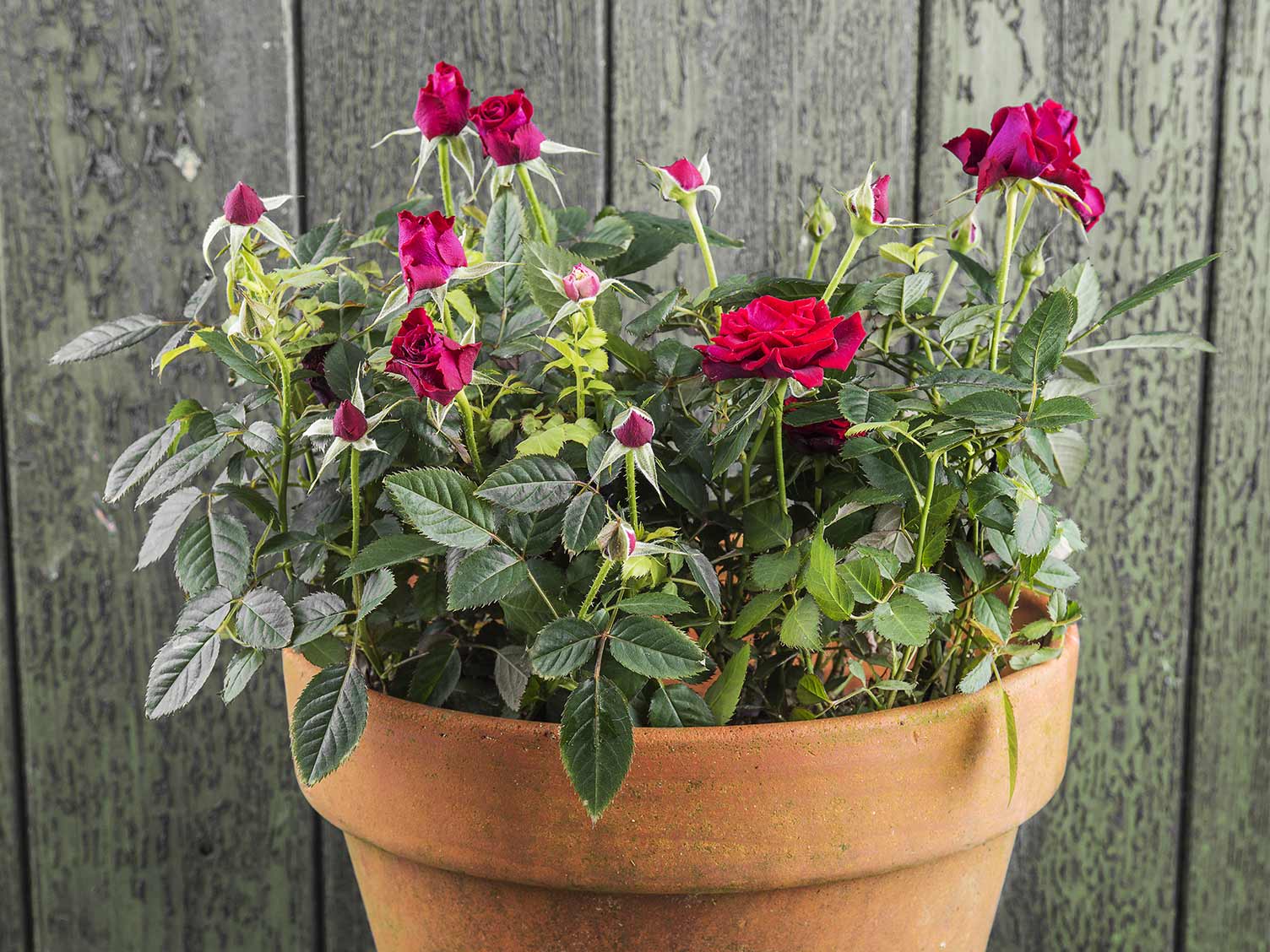
These dwarf roses grow anything from 15-60cm (6in-2ft) high. They are perfect for the front of the border and small, deep containers.
Bush roses
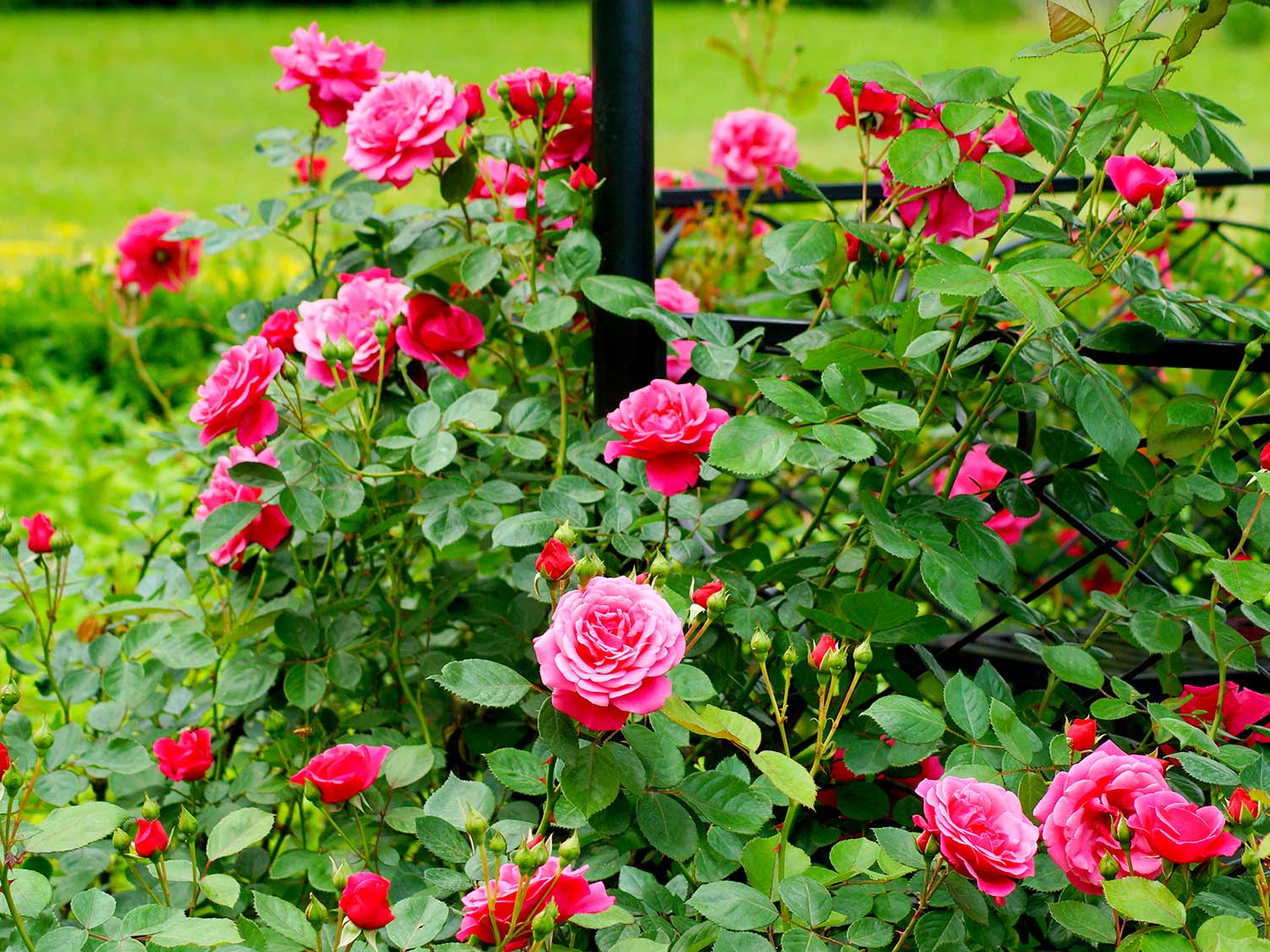
This includes hybrid tea (sometimes called large-flowered roses), floribunda (sometimes called cluster roses) and David Austin New English roses. They grow anything from 90cm-1.8ft (3-6ft) high. They are the main choice for borders and large containers.
Shrub roses
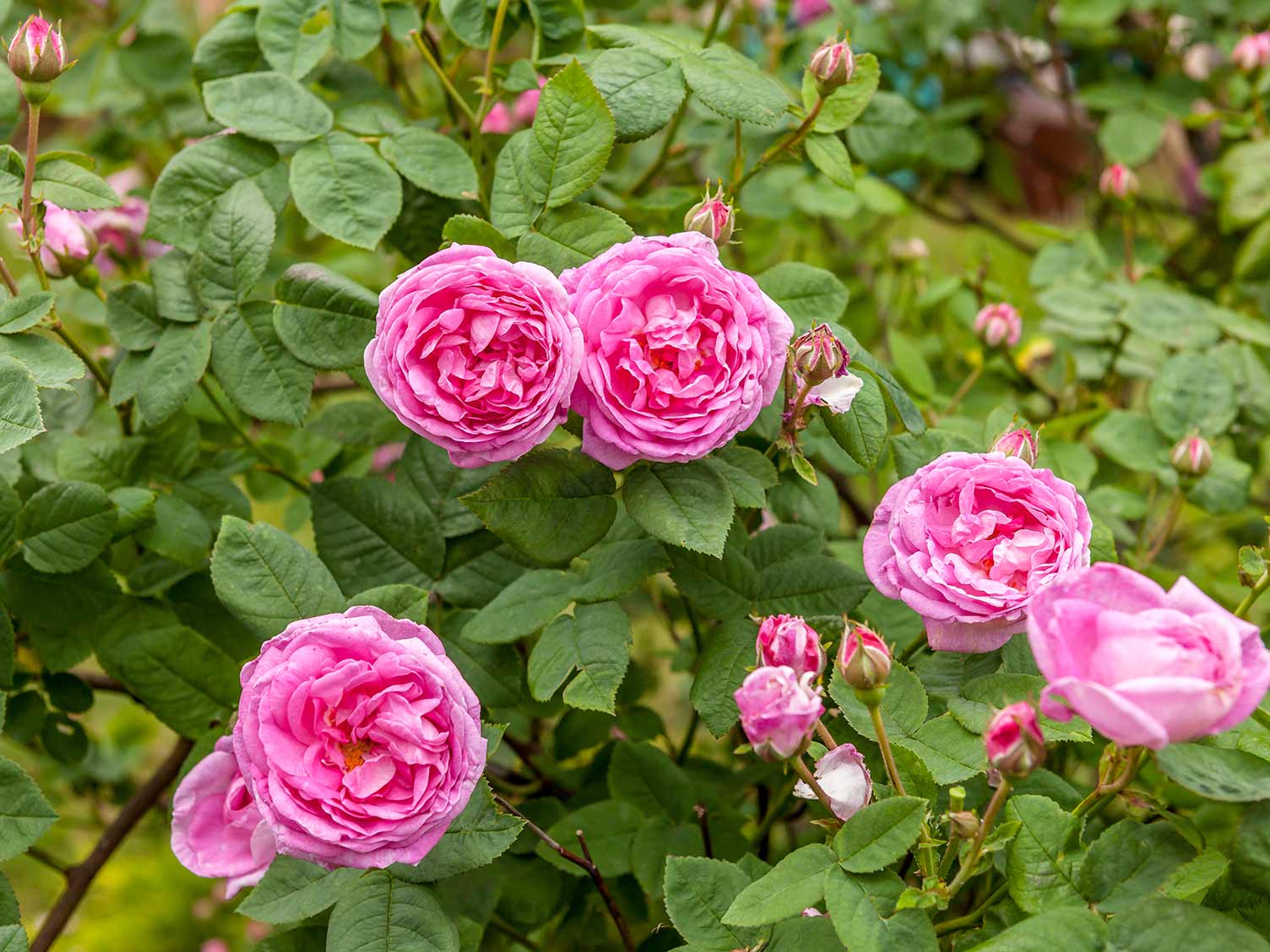
This is the term given to a broad group of roses that includes the old-fashioned varieties, such as Bourbons, Centifolias and Albas, and species roses. Shrubs can be dwarf in height or grow anything up to 2.4-2.7m (8-9ft) high. Most are quite vigorous and only flower for a short period in summer.
Climbers and ramblers
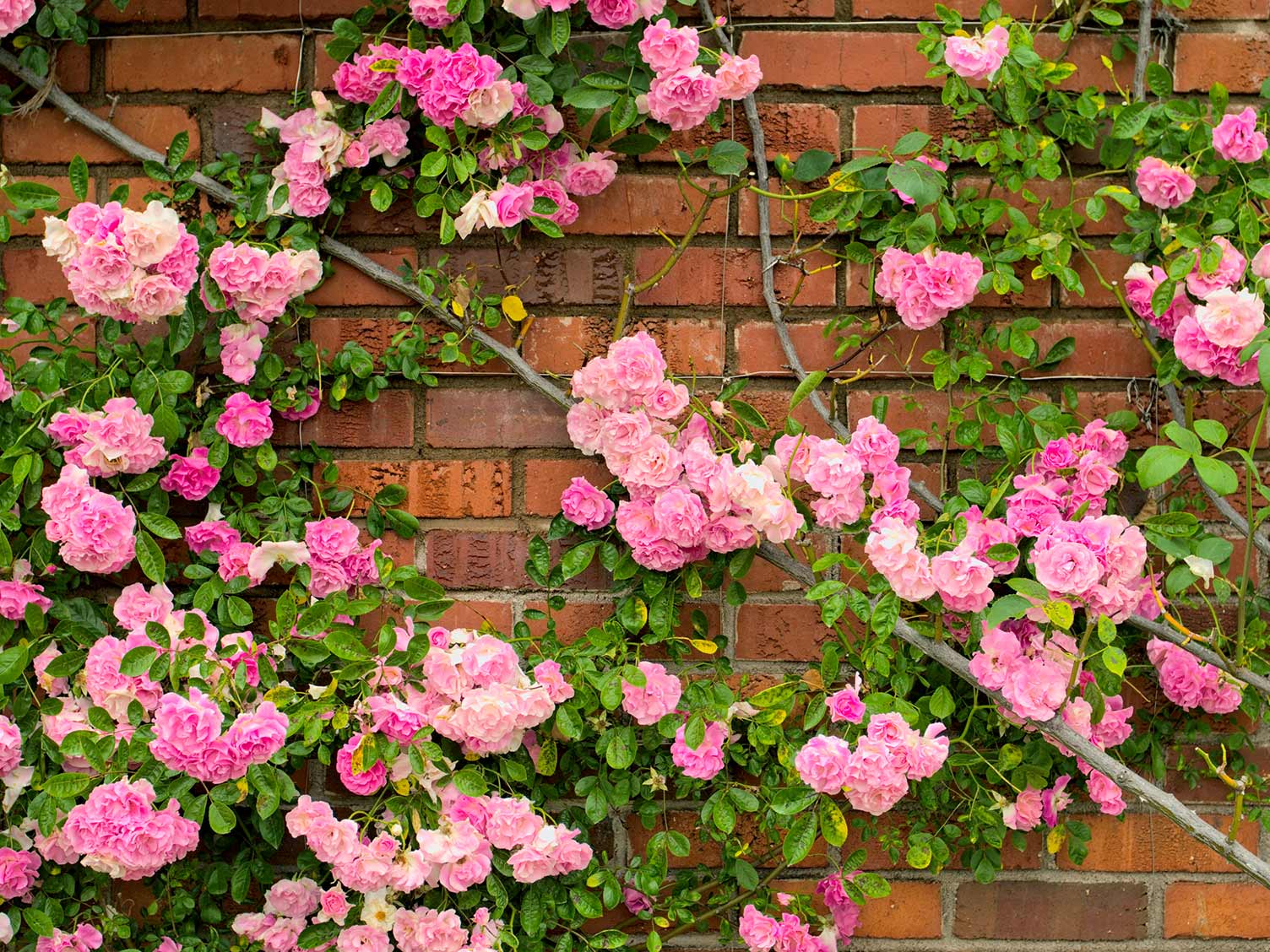
These are traditionally used to cover walls, fences, rose arches and pergolas. The main differences between the climbers and ramblers are: ramblers are more vigorous than climbers and only really suitable to cover large areas, they tend to only flower once in summer and usually produce clusters of smaller flowers. Climbers are less vigorous, more compact, produce larger flowers and usually flower all summer long.
Ground cover roses
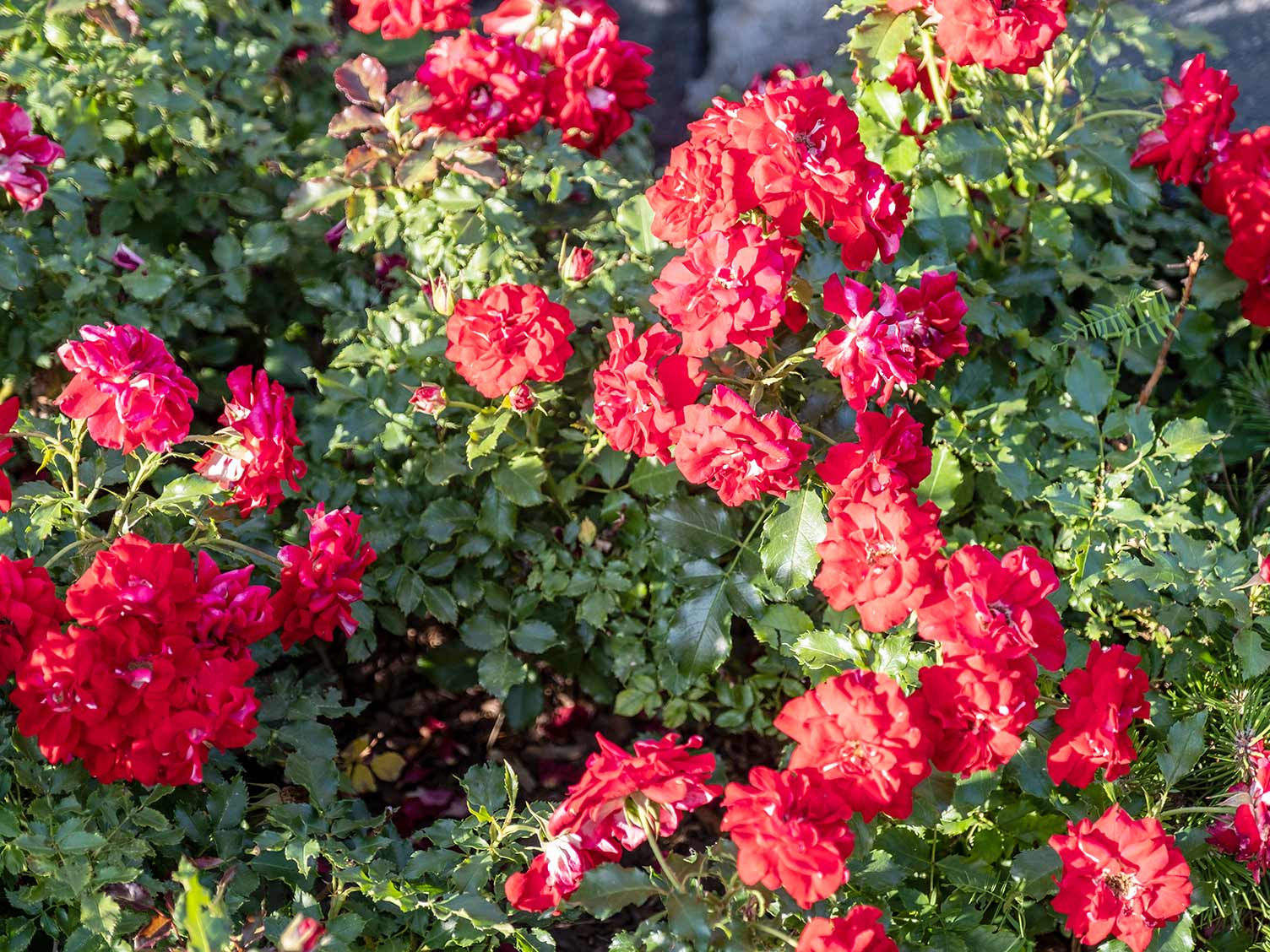
These low-growing roses are useful for covering quite large areas of ground. As they don’t produce thick mats of foliage, they don’t tend to be that useful for weed suppression but are brilliant for producing a carpet of colour.
Standard roses
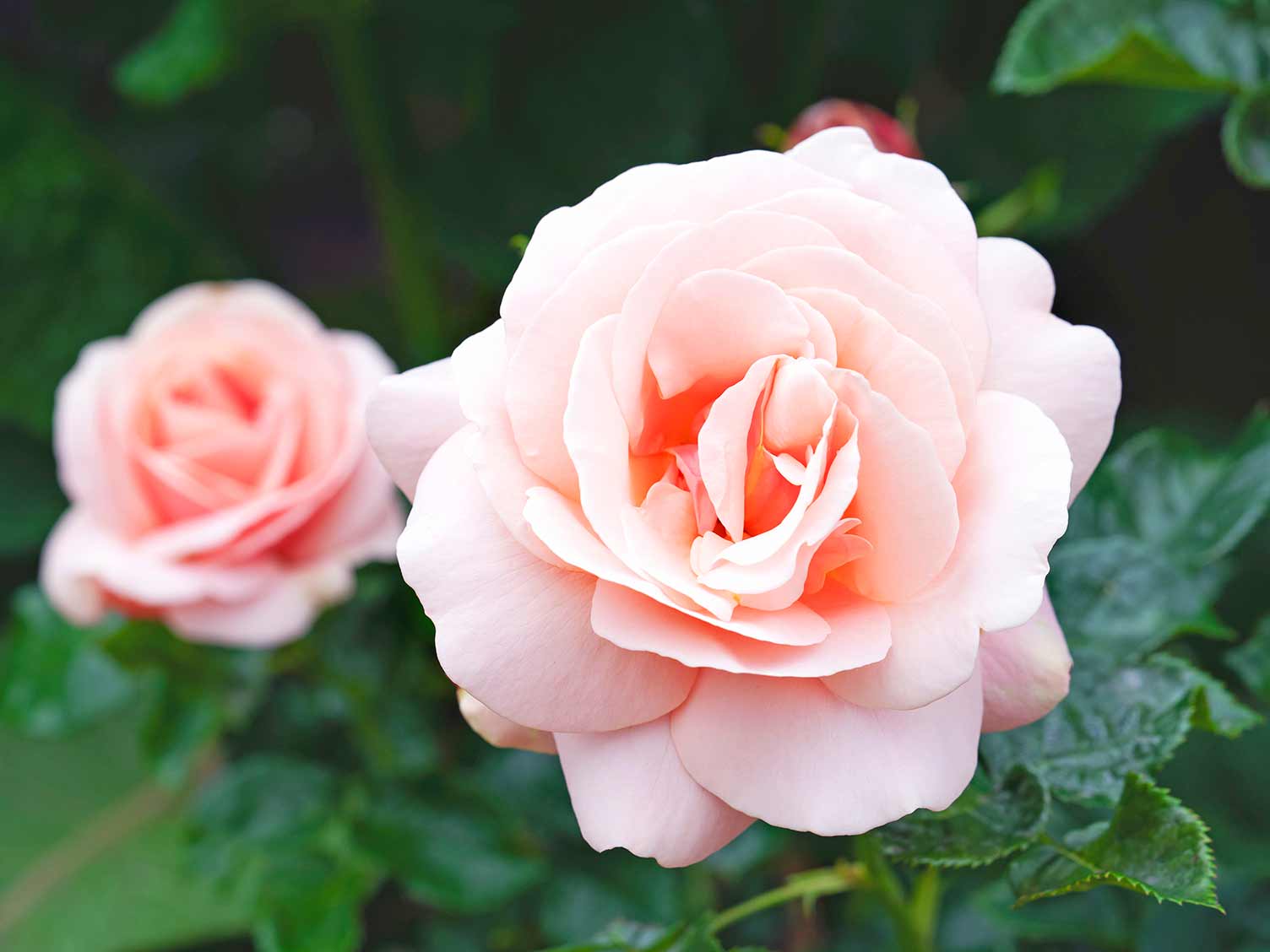
These have either a bush rose or a climbing or rambling rose (weeping standard) variety grafted on top of a single, upright stem. They come in a range of heights, including quarter, half and full standards.
Buying roses
You can buy roses in three different ways: bare-root; pre-packed; and containerised or container-grown.
Bare-rooted roses and pre-packed roses
Pre-packed roses are basically the same as bare-rooted roses, but have their roots trimmed and wrapped in plastic with a little compost. Bare-rooted roses and pre-packed roses must be planted between mid-autumn and early spring when the plants are dormant. Soak the roots in a bucket of cool water for a couple of hours before planting, as the roots may have begun to dry out.
Containerised and container-grown roses
These can be planted at any time of year, providing that the ground is not frozen solid, waterlogged or suffering from drought conditions. Most roses are containerised - having been grown in the ground, then lifted and potted up - so check plants have developed a good root system before buying and planting.
Always check the leaves, stems and flowers before buying and only buy strong, healthy-looking plants. This will prevent many potential problems right from the start.
Planting roses
For bare-root and pre-packed roses, dig out a hole large and deep enough to easily accommodate the spread out roots at the right depth.
For containerised or container-grown roses, dig out a planting hole twice as wide and 5-7.5cm (2-3in) deeper than the pot.
Prepare a planting mixture of 50/50 garden soil mixed with more organic matter, such as Sylva Gro Peat Free John Innes No 3 Compost, adding in organic rose food and RootGrow.
Line the base of the planting hole with a 5cm (2in) depth of planting mixture, place the rose in the hole, checking that it is at the correct depth, and fill the hole with the remainder of the planting mixture. Gently firm the planting mixture around the roots. Then water in thoroughly and mulch the soil.
Growing roses in containers
Most roses can be grown in good sized containers – including climbers – providing they are deep enough to accommodate the rose’s deep roots. Obviously, as with any plant that is grown in a container, they will need more care and attention than when grown in the ground.
How to care for roses
As roses are deep-rooting plants, they rarely need watering once they have become established, particularly on heavier clay soils. In prolonged periods of dry weather, even established roses need watering.
It is better to give the roots a thorough soaking by using a drip-feed, ‘leaky pipe’ system, or simply a hosepipe turned down to a trickle so that the water is applied gradually over a long period. Watering in the early in the morning minimises the chances of black spot attack, avoid getting leaves and blooms wet which also encourages black spot.
Roses are hungry feeders. To feed established roses, use granular rose food (Vitax Organic Rose feed) in early spring, or after pruning, and again in mid-summer. Alternatively, you can feed once in spring with a continuous release rose feed. This will feed your plants for the whole season with 1 application. Maxicrop Liquid Seaweed are is ideal for roses that are tired or after the effects of black spot.
Providing that the soil has been prepared well prior to planting and roses are fed correctly, nutrient deficiencies should not occur. If yellowing leaves do develop, the rose may be suffering from iron and/or manganese deficiencies.
Mulches are extremely valuable to help maintain favourable soil conditions, as well as reducing the level of maintenance needed, by helping to retain moisture in the soil, suppress weeds and maintain an even soil temperature.
When applying a mulch for the first time, it is best applied when the soil is warm and moist; don’t apply it to dry soil. Before applying the mulch, remove any weeds, especially deep-rooted perennials. Most mulching materials need to be at least 7.5-10cm (3-4in) thick to effectively control weeds and conserve soil moisture.
The traditional method of pruning, hard pruning to about a quarter of an inch (6mm) above a bud, sloping away from it at a slight angle, is generally not necessary. See our guide below for ways to prune your roses.
It does not matter whether pruning is carried out in autumn/early winter or in the spring, as long as no hard frosts are expected, as this can cause newly cut shoots to die back. However, it is generally recommended that tall rose bushes should be cut back by about one-third in late autumn to avoid wind damage.
Generally, shrub roses, ground cover roses and standard roses need only be pruned to keep them looking tidy and within bounds. Climbers and ramblers, provided that they are well supported and trained, need their sideshoots pruned to just a finger length or so. The branches of bush roses can be trimmed to about half their previous length. In all cases, remove dead, diseased, damaged and particularly old wood.
Deadheading is the removal of spent blooms before the plant is able to set seed. This encourages the plant to produce more flowers in a further attempt to reproduce, which is after all the plant’s reason for flowering in the first place. Deadheading acts a form of light summer pruning.
The traditional method of deadheading was to cut off the shoot, some 3 to 5 leaves below the spent flower. More recently it has been shown that roses perform better when they carry more foliage. The current recommendation for deadheading is simply to carefully snap off dead flower heads at the abscission layer. This is a swollen part of the stem below the bloom, where the rosehip would naturally be shed and is normally where the first leaflets can be found.
Pruning and deadheading roses
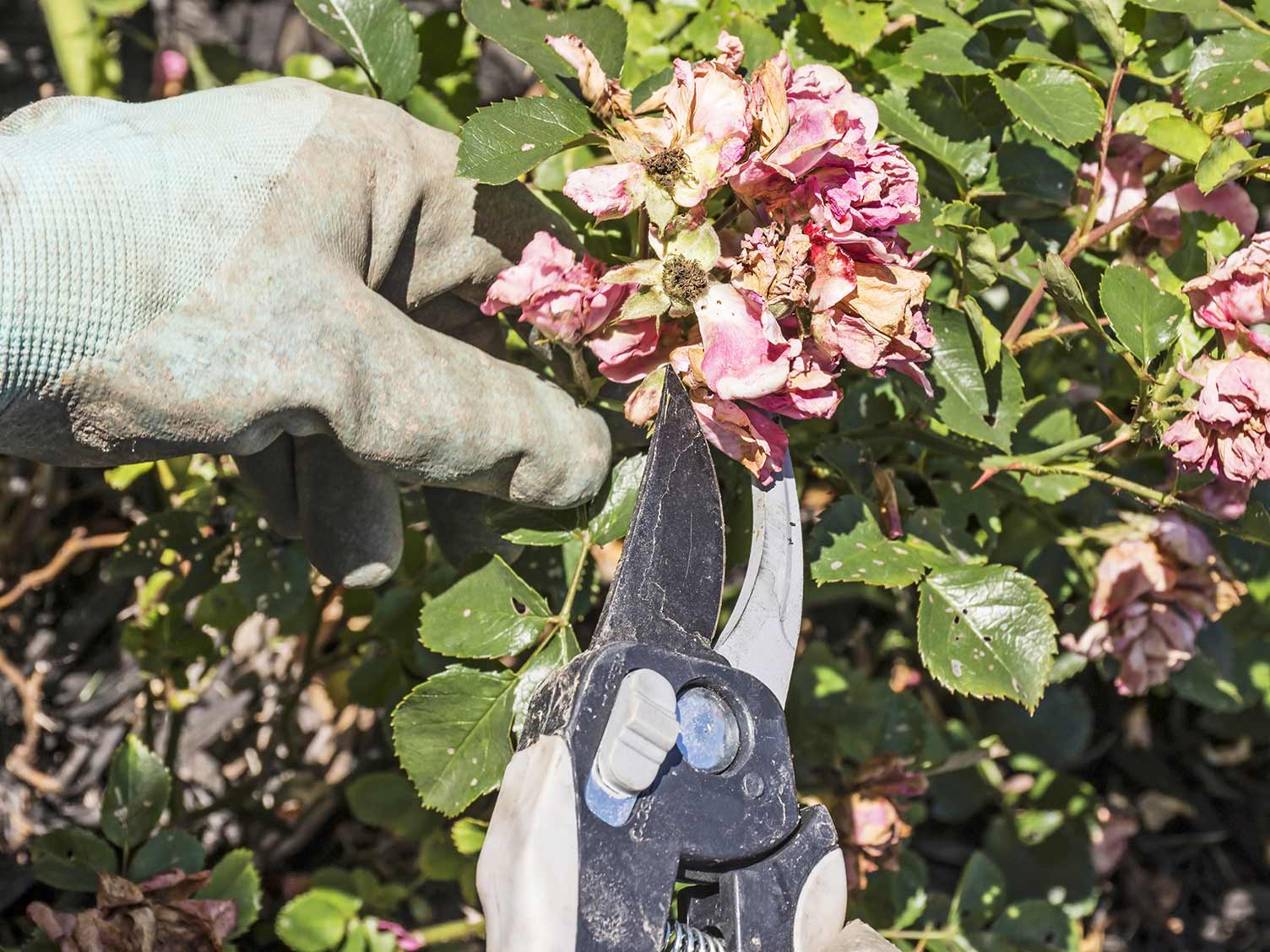
Roses are pruned to keep them within bounds, remove old, unproductive growth and to make them flower well. The traditional method of pruning, hard pruning to about a quarter of an inch (6mm) above a bud, sloping away from it at a slight angle, is generally not necessary.
In fact, the more foliage a rose carries, the better its flowering performance will be. So, removing about half the length of the old branches on bush roses is usually sufficient and it is not necessary to remove twiggy and non-flowering growth other than shrub suckers and dead growth.
Sucker growth, which comes from the root system onto which the rose variety is grafted, is fast growing and will take over the plant, and should be removed by gently tugging it away from the rootstock, rather than cutting it.
It does not matter whether pruning is carried out in autumn/early winter or in the spring, as long as no hard frosts are expected, as this can cause newly cut shoots to die back. However, it is generally recommended that tall rose bushes should be cut back by about one-third in late autumn to avoid wind damage.
Generally, shrub roses, ground cover roses and standard roses need only be pruned to keep them looking tidy and within bounds. Climbers and ramblers, provided that they are well supported and trained, need their sideshoots pruned to just a finger length or so. The branches of bush roses can be trimmed to about half their previous length. In all cases, remove dead, diseased, damaged and particularly old wood.
Deadheading is the removal of spent blooms before the plant is able to set seed. This encourages the plant to produce more flowers in a further attempt to reproduce, which is after all the plant’s reason for flowering in the first place. Deadheading acts a form of light summer pruning.
The traditional method of deadheading was to cut off the shoot, some 3 to 5 leaves below the spent flower. More recently it has been shown that roses perform better when they carry more foliage. The current recommendation for deadheading is simply to carefully snap off dead flower heads at the abscission layer. This is a swollen part of the stem below the bloom, where the rosehip would naturally be shed and is normally where the first leaflets can be found.
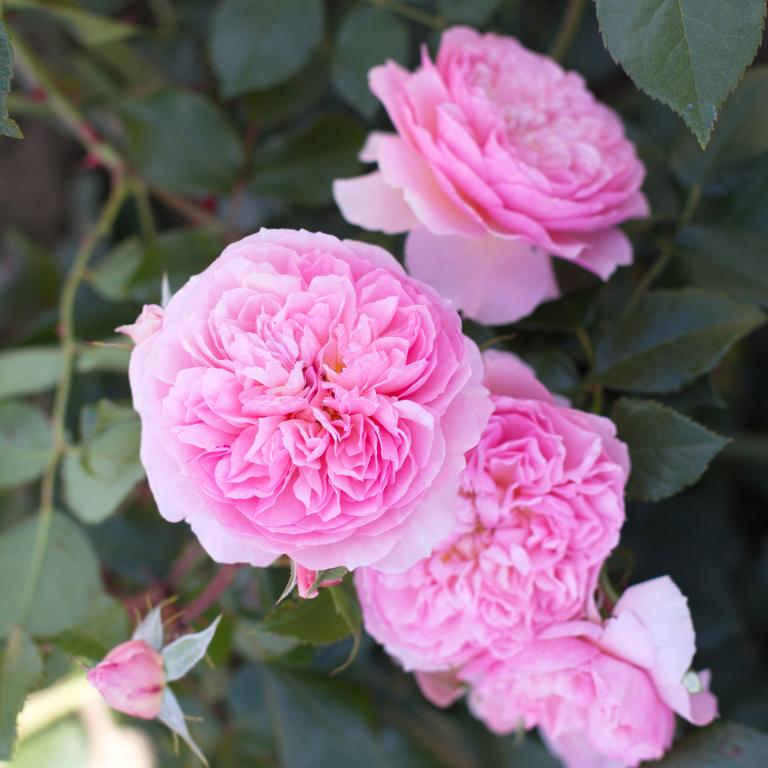
Our Charity Roses
The Blue Diamond Group of Garden Centres are proud to support the following Charities through sales of its Fryer’s Charity Roses. Blue Diamond donates £1 for every charity rose sold through Blue Diamond Garden Centre and Fryer’s Roses online, to the respective charity.
Charities need all the help and support they can get at the moment so please continue to support these charities by purchasing a Blue Diamond Charity rose. Charity roses are available to buy online at www.bluediamond.gg or visit your local Blue Diamond Garden Centre.
